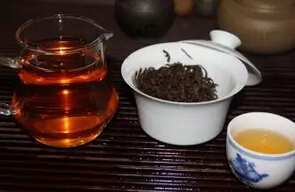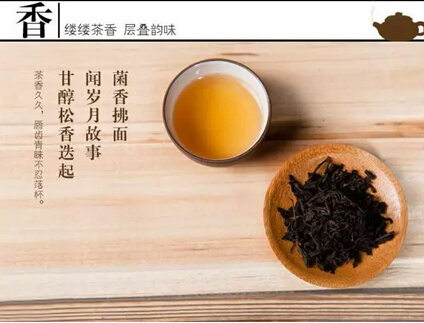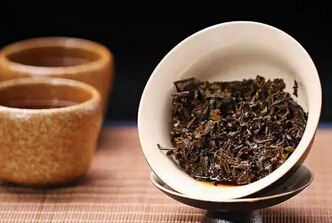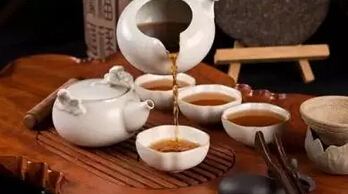The character for 'tasting' tea (品) consists of three mouths, symbolizing the act of evaluating, appreciating, and experiencing the material and spiritual pleasures tea brings. Tasting tea differs from drinking tea; the latter is primarily for quenching thirst, a physiological need often done hastily without much thought. In contrast, tasting tea seeks spiritual fulfillment, emphasizing意境 (artistic conception), turning tea drinking into an art form. It involves savoring slowly, attentively experiencing, and deriving aesthetic joy from the tea's beautiful color, aroma, taste, and form, inspiring emotions and reflections from various perspectives.
Observing Color

This mainly involves observing the color of the tea soup and the form of the tea leaves. After brewing, the leaves almost revert to their natural state, and the soup's color deepens, becoming crystal clear. Even teas of the same type vary in color due to differences in aging. Enjoying the changing hues of dark tea soup is a delight. Before drinking, take a moment to examine and appreciate the tea soup.
Smelling the Aroma

After observing the color, smell the aroma emanating from the tea soup in the fairness cup. High-quality tea has a natural, pure fragrance that is uplifting and intoxicating. Inferior tea often lacks intensity and purity, sometimes carrying smoky, burnt, or grassy notes, or even odd odors. The aroma of tea is a blend of various aromatic compounds. Detecting its nuances requires careful and attentive appreciation.
Examining the Form

Observe the changes in the tea leaves after brewing. Once steeped, the leaves gradually return to their original shape. Dark tea leaves vary in form depending on the tea type, region, and tree age. Identifying the tea's origin through the leaves, understanding its transformation through storage, and enjoying the evolving leaf shapes offer endless fascination.
Savoring the Taste

After inhaling the tea's aroma, savor the flavors of the tea soup. Like its scent, the taste of tea is remarkably complex. Upon the first sip, it quickly stimulates salivation and leaves a lasting, profound aftertaste. This is due to the chemical elements in the tea interacting with the sensory organs in the mouth.